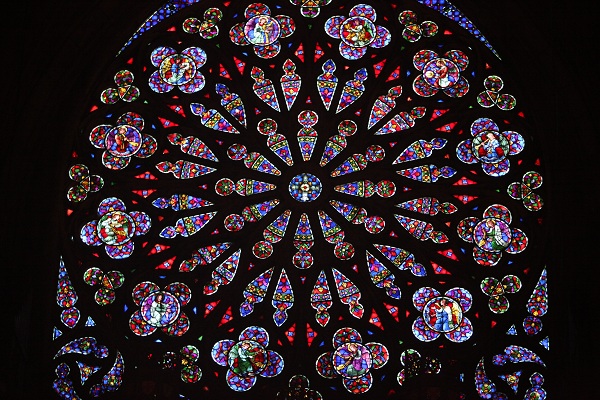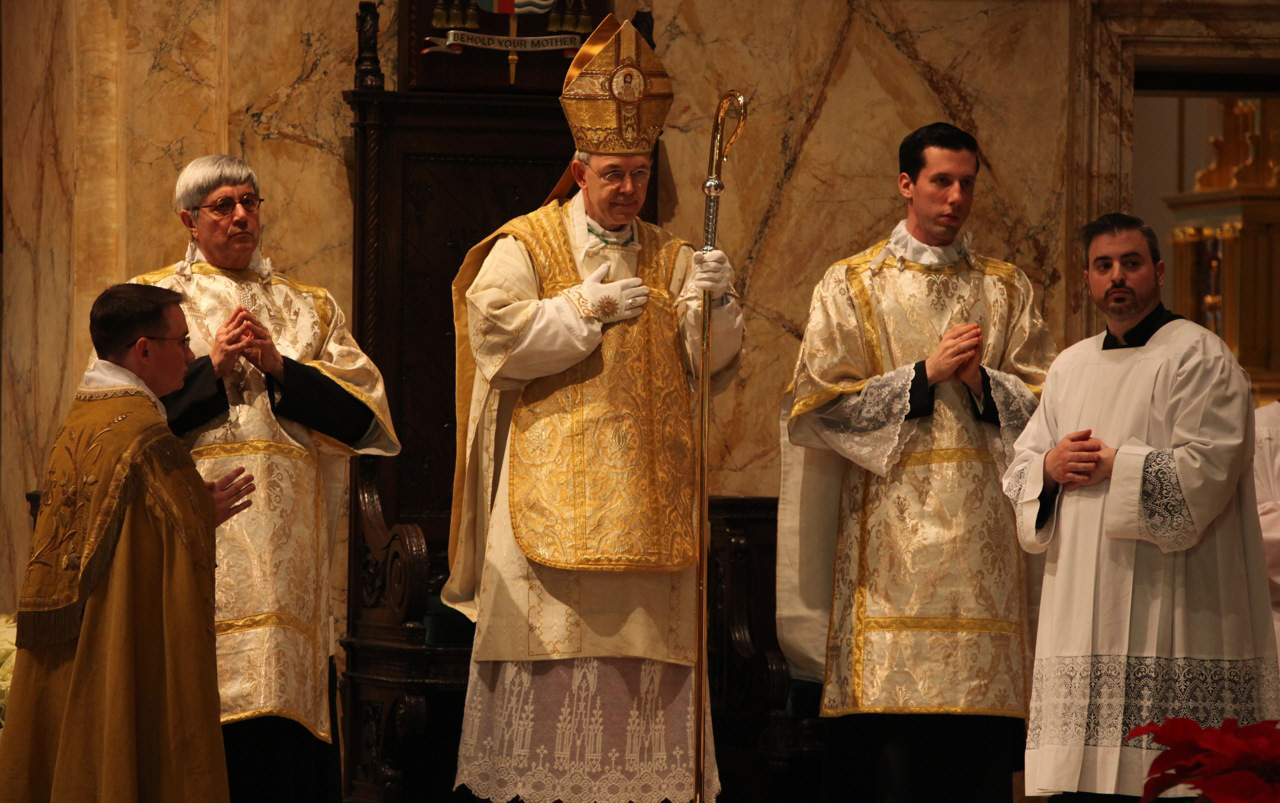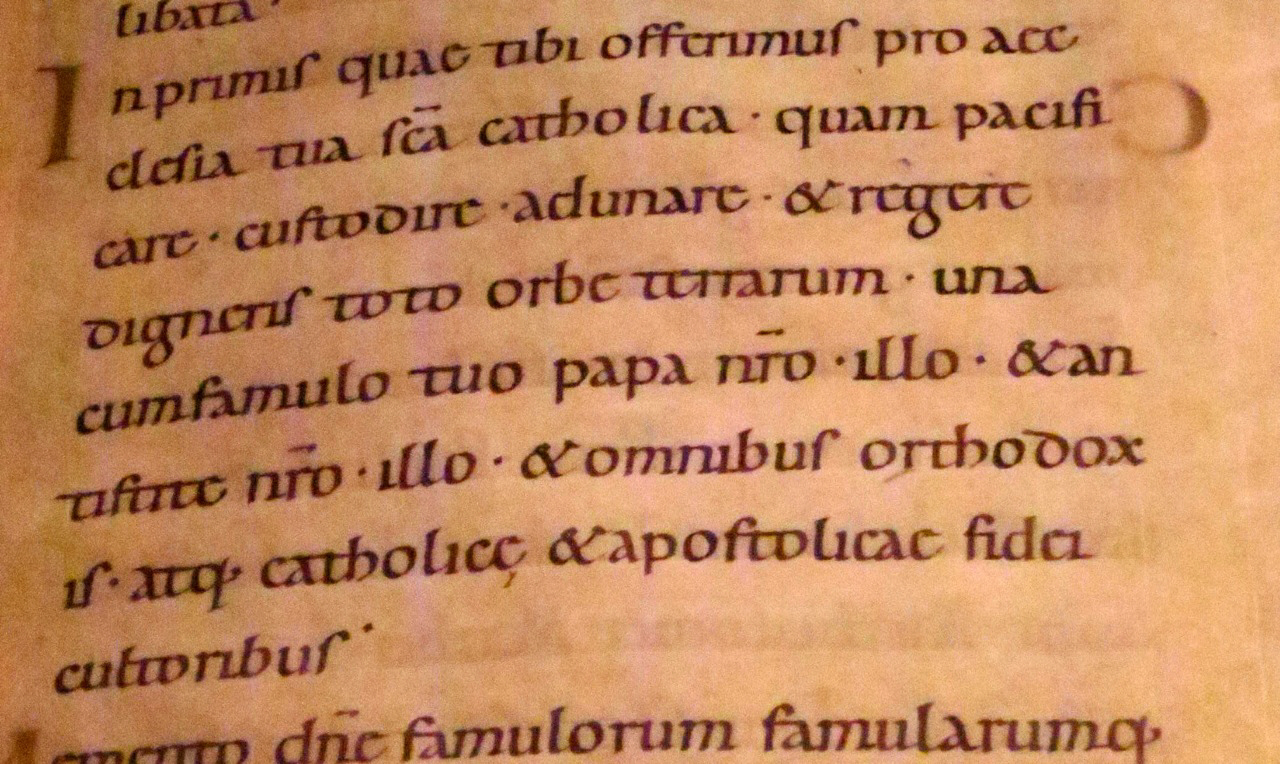The celebration of Corpus Christi at St. Mary’s Norwalk CT. Along with a visit by Monks of Norcia…..
(Above) Since there were only two masses this day, the assembled musical forces of the parish performed – including the student schola.
29 May
2016
The celebration of Corpus Christi at St. Mary’s Norwalk CT. Along with a visit by Monks of Norcia…..
(Above) Since there were only two masses this day, the assembled musical forces of the parish performed – including the student schola.
24 May
2016
EVENING OF RECOLLECTION BY DOMINICAN BROTHER JOHN PAUL KERN, O.P.
On Wednesday, June 8, 2016, Dominican (student) Brother John Paul Kern, O.P., will offer an evening of recollection at the Church of the Holy Innocents (West 37th Street, NYC).
PROGRAM:
5:15PM – The evening will start with the recitation of the Rosary (according to the Dominican practice) in the Presence of the Most Blessed Sacrament.
5:45PM – Reposition of the Most Blessed Sacrament.
6:00PM – (Traditional) Mass.
7:00PM – Brother Kern will offer a talk titled: “Living Mercy: A Recollection for the Jubilee Year of Mercy,” which will help us meditate on the Mercy of God, how to better receive God’s healing Mercy, and living as a missionary of Mercy.
8:00PM – Recitation of (Dominican) Compline in English. After the recitation of the Canonical Hour of Compline, there will be a wine & cheese reception in the parish hall.
Biographical information:
Br. John Paul Kern, O.P was in the Navy on the West Coast & he lived with his family settled in Alexandria. He attended Penn State University in Mechanical Engineering. After graduate school (in Nuclear Engineering), he converted to the Catholic Church. He got a job with the Nuclear Regulation Commission in Washington, D.C. and was eventually transferred to the Southeastern PA office. He discerned a Religious vocation and entered the Order of Preachers. He is very personable, has a good sense of humor, and is well grounded.
24 May
2016
This event explores the riches of English Catholic musical and religious culture under the Tudors. The lecture by Dr. Samuel Schmitt will describe the musical life of recusant Catholics in the time of Elizabeth, with live examples provided by Grant and Priscilla Herreid and Charles Weaver. The mass which follows, in the traditional Dominican rite, features the Missa Regali of Robert Fayrfax, essentially in its original liturgical context, in the English Gothic Revival setting of the Church of St. Vincent Ferrer. The contrast in musical styles will serve to highlight what was lost and what was gained in sacred music in the tumultuous passing from the age of Fayrfax to that of Byrd.
Samuel A. Schmitt has dedicated the better part of twenty years to making beautiful music for the Church as an organist, conductor, composer, teacher, and choral singer. He studied the Solesmes method of chant with Dr. Theodore Marier at the Catholic University of America, and earned both a master’s degree in liturgical music with a concentration in organ performance, and a doctorate in musicology for his research into the music and liturgical practice of persecuted Catholics in Elizabethan England. Dr. Schmitt has served as music director and organist at churches in several states and was an assistant organist at the Cathedral of St. Matthew and the National Shrine of the Immaculate Conception, both in Washington, DC. He currently serves as assistant organist at St. Theresa’s Church in Trumbull, CT, while promoting the artistic legacy of his grandfather as executive director of the Carl Schmitt Foundation.
3 May
2016
Venerating the incorrupt heart of St. John Vianney this evening at St. Mary Church Greenwich, CT. The relic will be at the church until Thursday morning. Tomorrow night there will be a Solemn Extraordinary Form Mass at 7:30 pm, with Fr. George Rutler as homilist.
Full details see link
25 Apr
2016
The events at St. Mary’s Greenwich include a Solemn Mass in the Extraordinary Form at 7:30 pm on Wed. May 4, with Fr. George Rutler as homilist.
23 Apr
2016
20 Apr
2016
On Friday, May 27, at 5:30 PM our Society will be sponsoring a lecture by Mr. Sam Schmitt:
” ‘Like the octave of some great feast’: Musical Life of English Catholics under Elizabeth.”
(The quotation is a paraphrase from a passage in the autobiography of the Jesuit William Weston, describing his time in the house of Richard Bold, where William Byrd joined them for a time and they had sung mass with choir.)
The presentation will take place in the church hall of St. Vincent Ferrer parish in New York City. Mr Schmitt’s lecture will be illustrated by the performance of works of the recusant musical culture of the Elizabethan era.
Following the lecture, at 7:00 PM a Solemn High Mass in the Dominican rite will be celebrated in the magnificent church of St. Vincent Ferrer. The music will include examples of English polyphony of the 16th century. A reception will follow.
We are proud to be able to sponsor this splendid Mass and the preceding lecture; we hope as many of you as possible can attend!
19 Apr
2016
A fine group of young men, all of whom serve mass at St. Mary’s Church Norwalk, at the annual altar server dinner given this evening by the Knights of Columbus at the St. Ann Club in Norwalk.
17 Apr
2016
“With a deep sense of gratitude to Almighty God and to Monsignor Barreiro, I wanted to let HLI’s supporters know that, after years of discernment, Monsignor has accepted an invitation to serve as parochial vicar of St. Mary Church in Norwalk in the Diocese of Bridgeport, Connecticut. Though Monsignor is stepping down from full time service with Human Life International, his commitment to the defense of faith, life, and family is not diminished. He will continue to preach the Gospel of Life and integrate Church teaching on life and family into his new pastoral duties, and he will continue to publish articles with HLI when his duties allow.”
(From the statement of Father Shenan J. Boquet, president of Human Life International)
17 Apr
2016
St. Anthony of Padua Oratory has planned a pilgrimage to the Cathedral Basilica of the Sacred Heart, Newark on the morning of Saturday, April 23. The pilgrimage will begin with a 2.5 mile walk through Branch Brook Park in Newark. The famous Japanese cherry trees—there are some 2,700 of them–will be in full bloom. The procession will cross the holy doors of the Cathedral Basilica in order to gain the plenary indulgence of the Year of Mercy, as decreed by Pope Francis. There will be a solemn mass in the extraordinary form at the high altar.
Schedule: Meet at 8:00 am at Barringer High School parking lot just west of the cathedral across Ridge St (please note: this meeting location has been changed)
Crossing of the Holy Doors of Mercy at 9:30 am (possibility for Confession)
Solemn High Mass at 10:00 am
For information call:
Institute of Christ the King/St. Anthony of Padua Oratory
Canon Jean Marie Moreau
1360 Pleasant Valley Way, West Orange, NJ 07052
973-325-2233
saint.anthonys@institute-christ-king.org
www.institute-christ-king.org/westorange
Here are some facts about the Cherry Blossom Festival in Branch Brook Park from the website www.visitnj.org:
New Jersey has more cherry trees than Washington D.C. And every spring residents and visitors alike can see the largest cherry blossom collection in the United States. Branch Brook Park, that runs through Belleville and Newark, has more than 2,700 Japanese cherry blossom trees that burst into full bloom during the annual Cherry Blossom.
Each year thousands of visitors are awed by the beautiful colors of pink and white. The park first adopted a pink and white hue in 1927, when Caroline Bamburger Fuld donated 2,000 cherry blossom trees to the Essex County Parks system in memory of her late husband.
Branch Brook Park also holds the distinction of being the first county park in the United States opened to the public, it was designed by the famed landscape architectural firm of Olmsted Brothers, a successor to Frederick Law Olmsted, the designer of Central Park in New York City.



